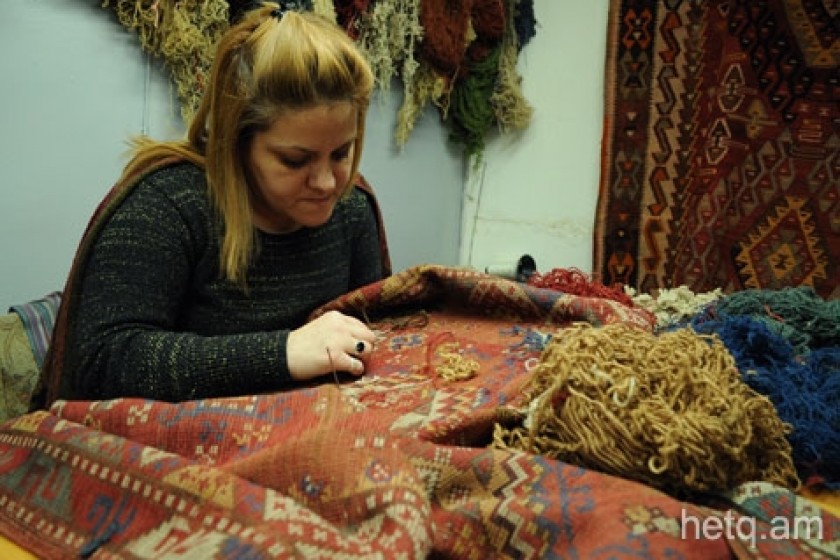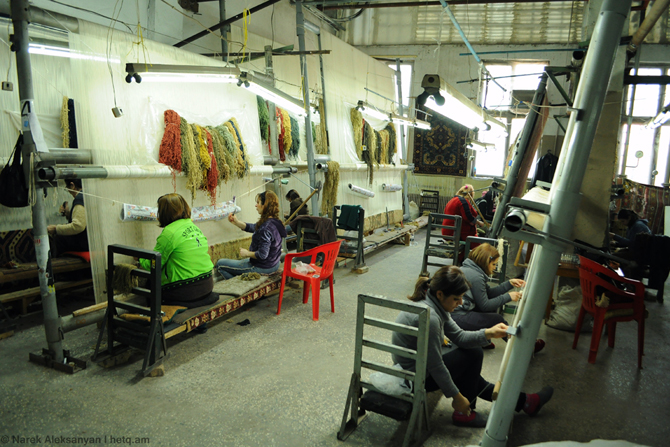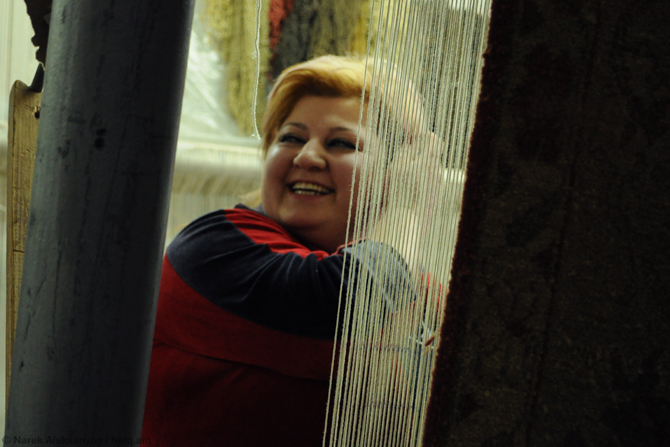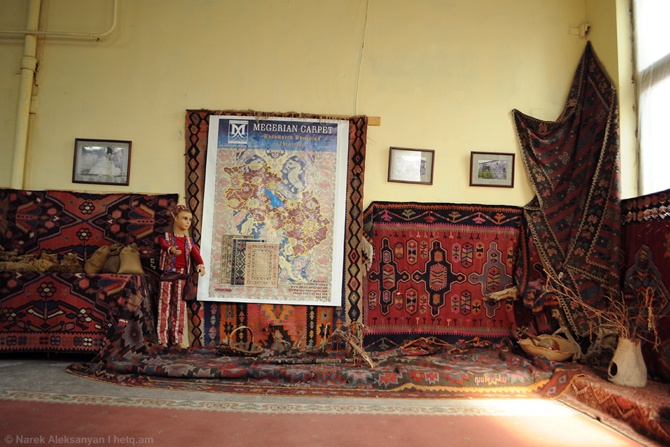
An Ancient Art: Century-Old Carpet Manufacturer Uses Natural Dyes and Armenian Designs
A successful century-old rug manufacturer, Megerian Carpets uses natural dyes and ancient Armenian designs to produce its rugs in Armenia, exporting them all over the world.
Of its 22 factories in Armenia, however, only 3 remain — in Yerevan, Abovyan, and Hrazdan.
The Armenian carpet manufacturers' remaining factories were temporarily closed because of the global economic crisis, says Production Director Leonid Andreasyan, adding that 90% of their rugs were exported to the US, but after the economic crisis, this figure drastically reduced. Now primary consumption occurs in the domestic market, and the majority are tourists. However, Megerian Carpets continue to receive orders from different countries around the world — Equatorial Guinea, Australia, China, and countries from South America, to name a few.
"Now we don't focus on quantity but on quality, on design and colors," says Andreasyan.
The rugs are dyed with natural dyes, the main raw materials being perennial flowers, the peel of pomegranates, the husk of white mulberry trees, and madder (for alizarin dyes). Only indigo is imported from India; the rest of the dyes come from Armenia. The carpet manufacturer mixes the dyes together in various quantities to achieve various shades. Alum and tartar are used to preserve the colors of the rug.
"Do you know how brutal the market is? There are many countries producing rugs: Turkey, Azerbaijan, Pakistan, China, Afghanistan, Vietnam. Their prices are lower than ours," says Andreasyan, explaining that this is due to poor social conditions and cheap labor. "In order to compete, you have to ensure such quality that it justifies your high prices."
 There are 30 people that work at the Yerevan factory, all women of varying ages. Some are just learning, while others have many years of experience in rug weaving. Knarik Sargsyan listens to music through her earphones while she works. She says sometimes she works like this because of the sedentary work. She's been here since 2001, initially working at the Abovyan factory then moving to the Yerevan factory. Sitting in front of the same rug and working together are Amalya Petrosyan and Vardouhi Harutyunyan. They have been weaving rugs for 10 years. While 3 women work together on a Vaspurakan rug, confessing that no longer is anything difficult for them. They recall that the hardest order was for a Karabagh rug with rose motifs, which they worked on for 5 months.
There are 30 people that work at the Yerevan factory, all women of varying ages. Some are just learning, while others have many years of experience in rug weaving. Knarik Sargsyan listens to music through her earphones while she works. She says sometimes she works like this because of the sedentary work. She's been here since 2001, initially working at the Abovyan factory then moving to the Yerevan factory. Sitting in front of the same rug and working together are Amalya Petrosyan and Vardouhi Harutyunyan. They have been weaving rugs for 10 years. While 3 women work together on a Vaspurakan rug, confessing that no longer is anything difficult for them. They recall that the hardest order was for a Karabagh rug with rose motifs, which they worked on for 5 months.

Lilit Petrosyan has been working at Megeryan Carpets for one-and-a-half months, though she has previous experience in rug weaving. She particularly likes the rugs' harmony of colors. A novice might confuse the colors, but she assures us that the images in the rug's design guide her and learning rug weaving is not difficult.
Megerian Carpets create their own designs, while also incorporating the design of ancient Armenian rugs. They also use ancient Armenian rug-weaving technology, making a double loop. Though this method is more difficult and requires more time, it gives the rug longevity. The most well-known of these rugs is the Vishapagorg ("Dragon Rug"), which originated in the 7th century.
"It turned out that the forgotten old is the best new," says Andreasyan.
 According to the production director, rug weaving, however, is only half the work. First and foremost, you have to choose the right wool, which Megerian Carpets acquires from various regions of Armenia: Zangezur, Ashotsk, Gegharkunik, Vayots Dzor, and elsewhere. Dyeing the wool is no less difficult. The dye materials are ground and mixed together, and dyeing wool naturally, as opposed to chemically, takes a few days. According to Andreasyan, they currently have more than 600 natural dyes, though only 150 are used in production, as the addition of a color and testing its compliance with other colors might take up to a year. A ready carpet is then washed several times and trimmed, after which its surface is again refined.
According to the production director, rug weaving, however, is only half the work. First and foremost, you have to choose the right wool, which Megerian Carpets acquires from various regions of Armenia: Zangezur, Ashotsk, Gegharkunik, Vayots Dzor, and elsewhere. Dyeing the wool is no less difficult. The dye materials are ground and mixed together, and dyeing wool naturally, as opposed to chemically, takes a few days. According to Andreasyan, they currently have more than 600 natural dyes, though only 150 are used in production, as the addition of a color and testing its compliance with other colors might take up to a year. A ready carpet is then washed several times and trimmed, after which its surface is again refined.
On display in the Megerian Carpets' showroom are ancient Armenian rugs from various time periods and regions in Armenia, including Western Armenia (modern-day eastern Turkey). Andreasyan points out that the rugs of Kharabagh and Armenia's Lori region are quite similar — especially the many animal motifs they both contain. If a rug is maintained well, it can last at least 300 years. The success of Megerian Carpets is due to the quality, unique colors and design of its rugs.
Photo credit: Narek Aleksanyan
 Videos
Videos Photos
Photos




Comments (2)
Write a comment